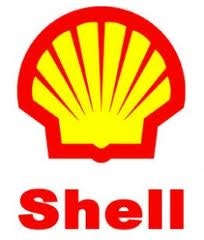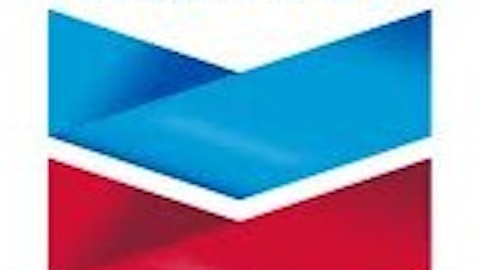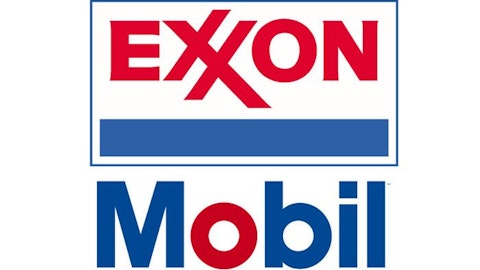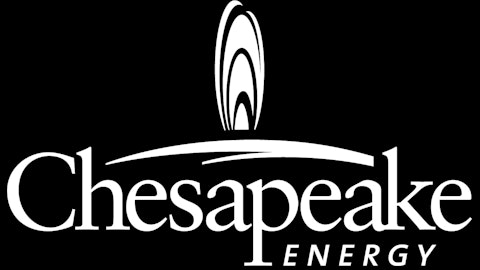
Most of Shell’s investment is focused on liquefied natural gas (LNG) projects. Royal Dutch Shell plc (ADR) (NYSE:RDS.A) is currently partnering with Chevron Corporation (NYSE:CVX) and Woodside Petroleum in Australian LNG projects. Shell has a 25% stake in Chevron’s massive $53.8 billion Gorgon LNG project and a 24.3% stake in Woodside Petroleum’s North West Shelf floating LNG venture (FLNG). Besides these two projects, Shell’s other upstream Australian LNG ventures are the Prelude FLNG project, Wheatstone, Browse, Sunrise and Arrow Energy.
The massive Gorgon project is now 60% complete. Chevron Corporation (NYSE:CVX) will start engineering and designing works for the expansion by the end of current year. At full capacity, Gorgon will pump 15.6 million tonnes of LNG each year. With the expansion, its annual capacity will increase to 20.8 million tons.
The Prelude floating LNG project in Australia, which will convert natural gas to liquid to be exported to the energy-hungry nations of Asia, is expected to be the first international energy project to use liquefied gas technology. When the project was approved in 2011, Shell gave a cost estimate of between $10.8 billion and $12.6 billion. Its Prelude floating gas rig is currently under construction in a South Korean shipyard.
Meanwhile, Woodside and Royal Dutch Shell plc (ADR) (NYSE:RDS.A), after mulling abandoning the development of the controversial $45 billion onshore LNG plant at James Price Point, have signed an initial agreement to develop the Browse project, which will focus on floating LNG. The reason for the change is that the FLNG-Browse project is much more economical. Woodside has a 31% stake in Browse, while Shell has 27%. According to analysts’ estimates provided by Platts, the FLNG-focused Browse project would cost up to $36 billion, which makes it nearly three times bigger than Prelude.
While Royal Dutch Shell plc (ADR) (NYSE:RDS.A) has taken the lead in developing the world’s first FLNG venture, Exxon Mobil Corporation (NYSE:XOM) is gearing up to develop the world’s biggest FLNG project off Western Australia. According to Australian Environment Department, the company will make a final decision by 2014 or 2015 and the project could start operations between 2020 and 2021. Exxon Mobil Corporation (NYSE:XOM) plans to produce twice as much LNG annually from the venture as compared to Royal Dutch Shell plc (ADR) (NYSE:RDS.A)’s Prelude project. Exxon Mobil Corporation (NYSE:XOM) has not given any cost estimates, therefore, I believe it is safe to assume that the project would cost the company significantly more than $12.6 billion.
There are uncertainties regarding costs of projects, which could be one of the reasons why Exxon Mobil Corporation (NYSE:XOM) is not revealing the cost estimates.
Australia: Costs boom vs. LNG boom
Although Australia is on track to become one of the biggest producers of LNG in the world, currently, it is not an ideal place for oil and gas exploration.
Generally, the cost of developing an LNG projects are 20% to 30% higher in Australia as compared to other countries. According to the estimates of Bureau of Resource and Energy Economics, Chevron Corporation (NYSE:CVX)’s Wheatstone project’s capital costs are around $2.9 billion per million tonnes while a similar project in Southern Africa, the Angola LNG project, has capital costs of less than $1.7 billion per million tonnes.
In fact, the Financial Times has identified that it is the most expensive country when it comes to offshore exploration and production. According to the Business Council of Australia, in remote parts of the region, construction wages are between $120 and $200 per hour, significantly above the U.S. Gulf Coast’s average wage of $68 per hour.
The rising cost is the single biggest concern for energy firms operating in Australia. The region’s oil and gas workforce represents some of the industry’s highest paid workers in the world. A shortage of skilled labor and the strong Australian dollar are the main reasons behind cost blowouts of several LNG projects.



